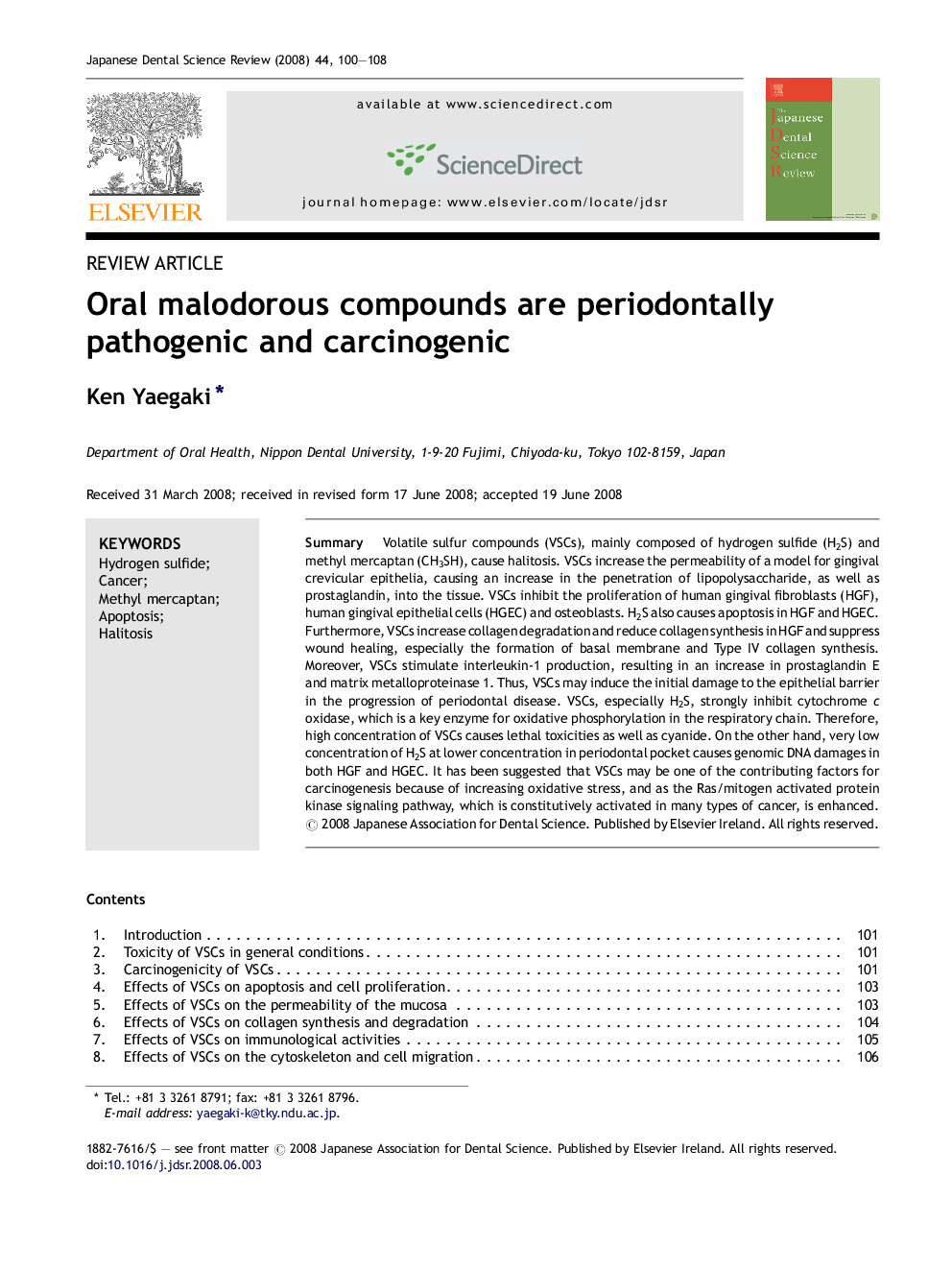| Article ID | Journal | Published Year | Pages | File Type |
|---|---|---|---|---|
| 3136240 | Japanese Dental Science Review | 2008 | 9 Pages |
SummaryVolatile sulfur compounds (VSCs), mainly composed of hydrogen sulfide (H2S) and methyl mercaptan (CH3SH), cause halitosis. VSCs increase the permeability of a model for gingival crevicular epithelia, causing an increase in the penetration of lipopolysaccharide, as well as prostaglandin, into the tissue. VSCs inhibit the proliferation of human gingival fibroblasts (HGF), human gingival epithelial cells (HGEC) and osteoblasts. H2S also causes apoptosis in HGF and HGEC. Furthermore, VSCs increase collagen degradation and reduce collagen synthesis in HGF and suppress wound healing, especially the formation of basal membrane and Type IV collagen synthesis. Moreover, VSCs stimulate interleukin-1 production, resulting in an increase in prostaglandin E and matrix metalloproteinase 1. Thus, VSCs may induce the initial damage to the epithelial barrier in the progression of periodontal disease. VSCs, especially H2S, strongly inhibit cytochrome c oxidase, which is a key enzyme for oxidative phosphorylation in the respiratory chain. Therefore, high concentration of VSCs causes lethal toxicities as well as cyanide. On the other hand, very low concentration of H2S at lower concentration in periodontal pocket causes genomic DNA damages in both HGF and HGEC. It has been suggested that VSCs may be one of the contributing factors for carcinogenesis because of increasing oxidative stress, and as the Ras/mitogen activated protein kinase signaling pathway, which is constitutively activated in many types of cancer, is enhanced.
